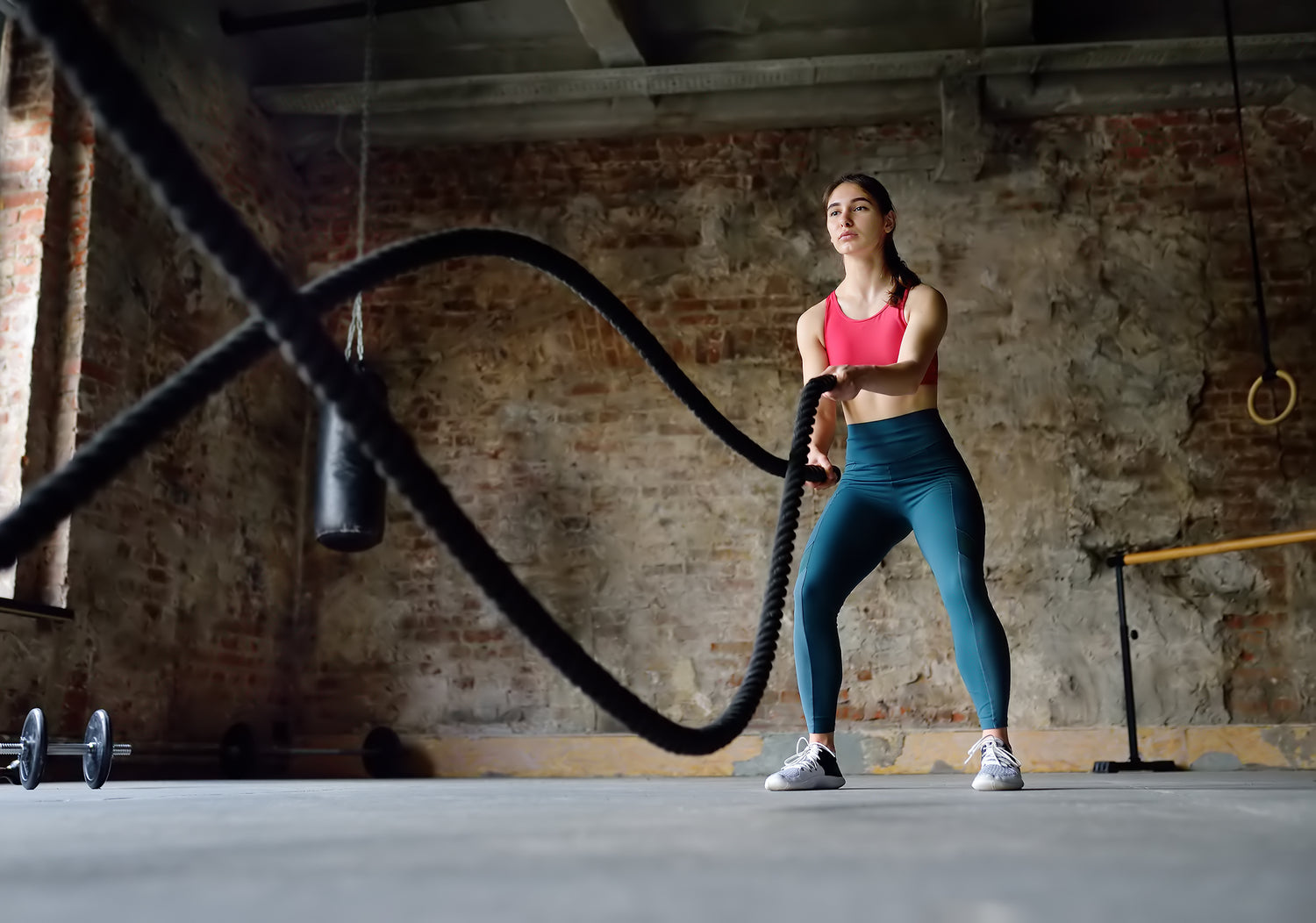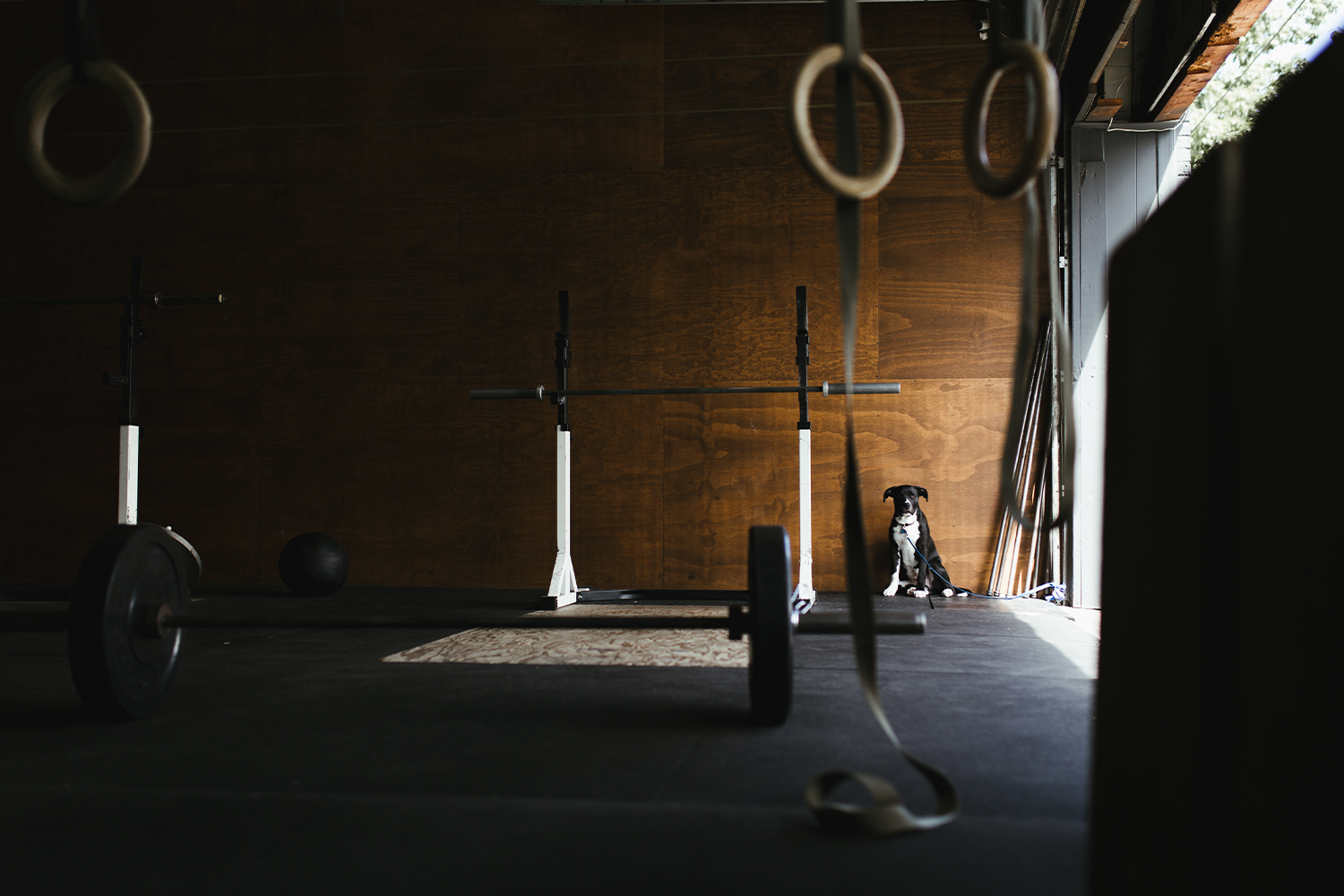HIIT vs. cardio — which one should I do? Does one have more benefits than another? Are there risk factors to engaging in either of these exercises? Whether you’ve been an athlete your entire life or you’ve barely worked out before this time, this article can be a great place to determine whether HIIT or cardio workouts are better for your exercise routine.
Whether you are trying to improve your heart health, increase your gains, increase fat loss, cardio training, or high-intensity exercise could help you reach your end goal.
You might not realize that HIIT and cardio actually go hand in hand and are frequently done together. For example, when doing a HIIT workout, the jumping, running, and other high-intensity moves provide you with cardio work as well.
Therefore, you are frequently engaging in both simultaneously. The good news is this- when it comes to working out, you never have to get bored with your routine.
Both cardio and HIIT provide several benefits, and your options for how to engage in them are endless!
Let’s go over the basics of what you need to know about HIIT workouts and cardio and how they can benefit you.
What Is a HIIT Workout?
HIIT stands for high-intensity interval training and is a type of workout in which you engage in repeated rounds of high-intensity exercise followed by a time of moderate to low-intensity recovery. One exciting factor HIIT offers is the excess post-exercise oxygen consumption (afterburn effect). Essentially what happens is you burn more calories than you would be doing regular cardio both during and after exercising.
These high-intensity moves could include:
- Walking
- Running
- Cycling
- Swimming
- Climbing stairs
- Jumping rope
- High knees
- Rowing ski-trainer
- Cross-country skiing
- Calisthenics like jumping jacks, push-ups, jumping squats
After engaging in these high-intensity moves, a recovery time follows, which brings down the heart rate before amping it back up with the more intense moves once again. The time intervals can vary.
For instance, the routine may include 50 seconds of exercise to 10 seconds break or 40 seconds of exercise to 20 seconds break that continues for the designated time of the workout. When it comes to the recovery period, this may look different depending on the workout. It might include 10 seconds with no specific movement, or it may involve a low-intensity exercise such as a plank.
Most HIIT workouts take anywhere from 10-40 minutes, aka less time than your average cardio workout. Even a short workout will provide many benefits, which we will discuss below. If you want to take your HIIT workouts a step further, endurance training can complement your HIIT workouts.
What Is a Cardio Workout?
A cardio workout consists of anything that gets you physically moving, improves your endurance, and increases your heart rate. Still, it differs from HIIT because it doesn’t involve regular intervals of high intensity to low-intensity moves. Some examples of steady-state cardio include a nice brisk jog, sprints, and walking.
Your everyday, normal cardio requires that your muscles have enough oxygen to perform it for an extended period of time. Doing so puts less stress on our bodies, but it does not burn as many calories as other workouts.
Instead, cardio is usually a consistent activity sustained for a more extended period of time, such as:
- Cycling
- Running
- Dancing
- Hiking
- Kickboxing
- Rowing ski-trainer
- Playing sports
- Elliptical
Cardio workouts typically involve more of a time commitment, as it takes more time to burn the same number of calories that would be burned in a shorter HIIT routine. However, cardio workouts are excellent if you have 30 minutes to an hour to spend and want to take a run outside, play tennis, or spend time dancing. Cardio is also a great way to mentally decompress after a long day or as a way to start your morning.
Benefits of HIIT and Cardio
When it comes to HIIT and cardio workouts, the benefits are endless. These include:
- Brain: improves blood flow, thinking, memory, and brain function.
- Bones: strengthens bones.
- Joints: increases range of motion.
- Skin: aids in healthier skin.
- Muscles: improves oxygen supply and muscle function.
- Weight loss: increases metabolism, fat burning effects, increases calorie burn throughout the day and supports weight loss.
- Pancreas: regulates blood sugar and cholesterol levels.
- Lungs: improves oxygenation and energy levels.
- Sexual function: improves body image and mental health, which contributes to increased sexual well-being.
- Mood: relieves feelings of tension, calms emotions, and improves mental health
- Sleep: supports sleep patterns and increases the quality of sleep.
Disadvantages of HIIT and Cardio
Just as with the benefits, the downsides to HIIT and cardio workouts appear to be very similar. The biggest risks involve injury, burnout and fatigue, dehydration, and irritability.
Increased Stress on the Muscles and Joints
As beneficial as cardio and HIIT workouts can be, there is a significant amount of stress on your muscles and joints. This could be due to several weight-bearing exercises, jumping, running, or other high-impact moves.
Therefore, it’s important to incorporate various routines for these workouts, as doing the same exercises too many days in a row can injure the muscles and joints. In addition, stretching before and after the workout can reduce the risks of injury.
Burnout, Chronic Fatigue, and Risk of Overworking Yourself
For both cardio and HIIT workouts, a balanced routine is essential. Doing the bare minimum in a workout will not produce results, while overworking yourself and pushing your body too hard will result in burnout. It’s important to understand your fitness level before engaging in exercise because this allows you to challenge yourself without overworking your body.
For example, if you’ve not a runner, going for a six-mile in the desert on the first day of your cardio routine will likely cause exhaustion, dehydration, and overheating. In the same way, if you’ve never done a HIIT workout, starting with an hour-long routine might scare you away from ever doing HIIT again. Instead, start with 10 to 15 minutes depending on your fitness ability, and increase it from there.
Lastly, it’s important to give yourself days off in your workout routine. Don’t exercise 7 days a week, 365 days a year with no breaks! It is recommended to engage in cardiovascular exercise three to six hours a week. Exceeding 10-12 hours a week can actually cause more harm than good. If you incorporate these tips in your workout, you will find yourself more energized with less risk of burnout and fatigue.
Dehydration
This can be easily avoided by staying hydrated regularly; however, dehydration is possible depending on your workout environment. This risk is higher if working out in a hot and sunny climate. For example, going for a run in the 90-degree heat is more likely to cause dehydration than working out in a gym with air conditioning.
The problem is that many of us don’t drink enough water on a day-to-day basis. How many of us are guilty of getting to the end of the day and realizing that coffee is the only thing we’ve had to drink in the last 12 hours? Drinking water regularly is essential to staying hydrated during exercise.
Increased Irritability
This downside is mostly seen with HIIT workouts, as some people actually show increased irritability with HIIT routines compared to low or moderate-intensity exercise. This may be due to many reasons, such as a too challenging workload, lack of breaks in the routine, or other causes. Whatever the reason may be, you must decide what workouts are most beneficial for you and your overall health.
So Then, Is There a Greater Advantage for HIIT vs. Cardio?
HIIT Shows Greater Progress in a Shorter Period in Comparison to Cardio Exercise
While both exercises have many benefits, HIIT workouts are shown to be more advantageous for a busy schedule. For example, the average HIIT goes for about 30 minutes, but as mentioned above, they can be as short as four or five minutes.
More progress is seen in a 15-minute HIIT training than is seen in an hour-long cardio workout, such as a run. Therefore, if you can’t handle a long trip to the gym, this type of exercise may be the perfect solution for staying in shape!
HIIT Can Be Done in Any Location
HIIT workouts can involve various gym equipment and supplies; however, you can complete these exercises with nothing more than your bodyweight if you lack these things.
In addition to this, a large space isn’t necessary for completing your routine- even a small corner of the home is effective. In that case, you can easily complete a HIIT workout with a combination of jumping jacks, running in place, burpees, jump squats, and many other exercises without leaving the space you are in.
On the flip side, you often need specific equipment or a larger space to complete cardio workouts. For example:
- Cycling requires a stationary bike or an outdoor bike with a place to ride
- Running requires a treadmill, a track, or another safe place to run
- Dancing can be done in a small area but is more difficult to accomplish without proper room
- Hiking requires a trail
- Kickboxing requires gloves and punching bags
- Doing a rowing or elliptical exercise requires the proper machines
- Playing sports requires a field or court
Therefore, while cardio has many benefits, it is less achievable when you are limited on space or equipment.
Cardio Is Safer for Those With Physical Restrictions
Both HIIT and cardio workouts can create a negative impact on joints from jumping and moving. However, HIIT tends to create more stress on the joints, as it is a higher intensity workout than cardio is. In addition, you can participate in a cardio workout without further stressing your joints.
For example, someone with knee pain can engage in cardio through swimming or biking, both low-impact. On the flip side, accomplishing HIIT with injured knees would be more difficult since this exercise involves a greater variety of high-intensity moves.
So Which Is Better: HIIT or Cardio?
Answering this question is difficult, as it depends on the person and their preference. It appears that HIIT workouts tend to have more advantages overall but aren’t always possible for those with physical restrictions or injuries. Therefore, in order to determine which is better for you, consider your fitness level, goals, and abilities. Both come with several excellent benefits for your body!
How Can EnergyFit Machines Benefit My Workout?
Whether you want to engage in cardio or HIIT, the Ski-Row Air and the Ski-Row Air+PWR are both excellent choices for your workout routine. These machines incorporate skiing and rowing into the exercise and can be the perfect cardio or HIIT go-to. For a list of rowing machines workouts, click here. We genuinely believe that you will love these machines and will discover how much they spice up your exercise routine!
The Take-Away
When looking at the differences between cardio and HIIT workouts, benefits and downsides are seen for both. They have equal effects on the body, including cardio, muscular, and mental health advantages. In addition, they have equal risk factors, such as burnout, injury, and dehydration.
Cardio may be more beneficial for those with painful joints or other injuries, while HIIT is shown to create a higher number of benefits in a shorter amount of time. When it comes to picking a workout routine, one over another is not better across the board. Instead, you must choose which is more beneficial depending upon your fitness level and ability.
EnergyFit’s rowing machines are the perfect options for both cardio and HIIT workouts.
Sources:
HIGH-INTENSITY INTERVAL TRAINING | ACSM
From Head to Toe: The Benefits of a Cardio Workout | Cleveland Clinic
The Benefits Of HIIT Workouts | Myy.org





Leave a comment
All comments are moderated before being published.
This site is protected by hCaptcha and the hCaptcha Privacy Policy and Terms of Service apply.